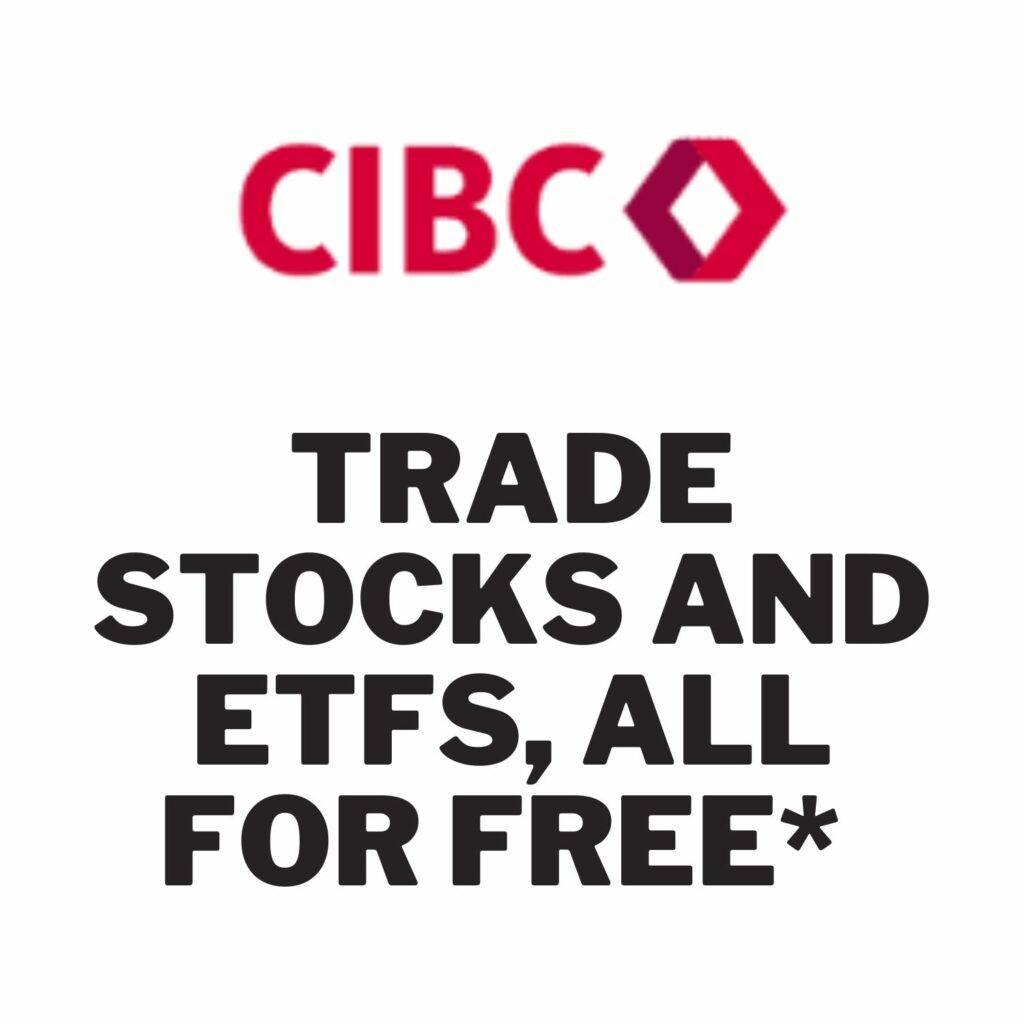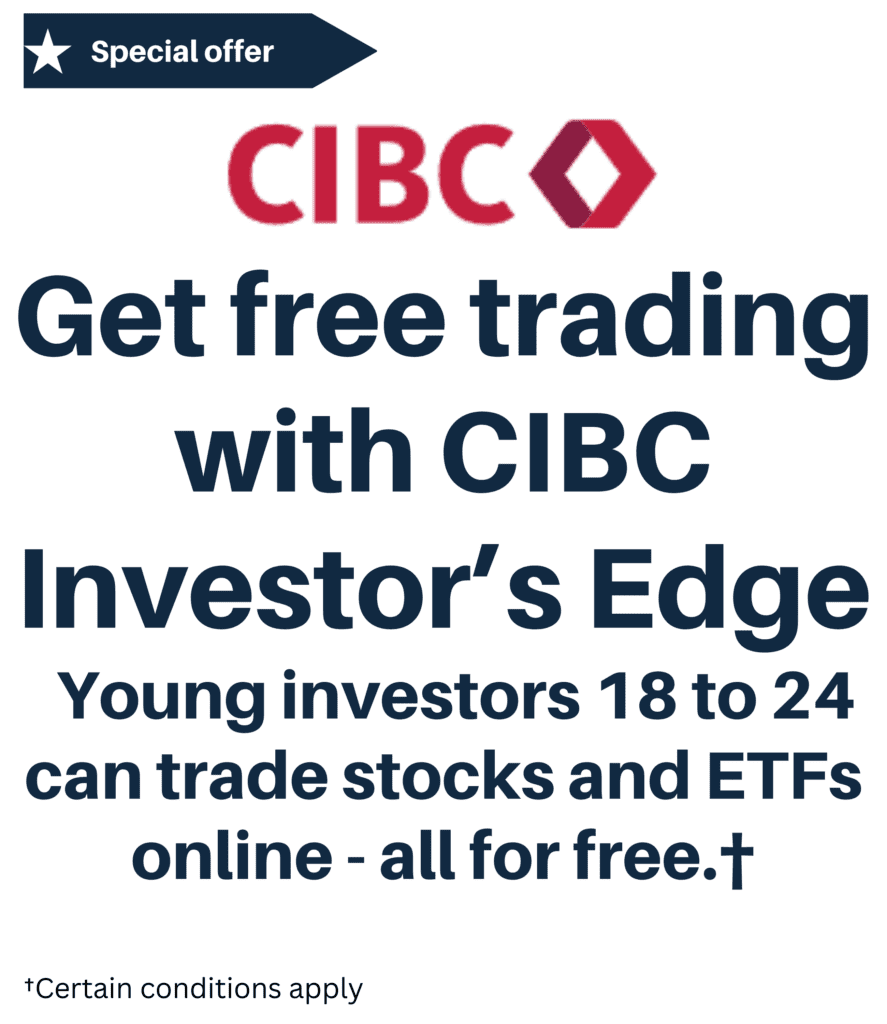Many Canadians prefer investing in ETFs because of their low management fee and diversification. ETFs now exist for every asset class and sector. The dilemma is to choose the right ones to build your portfolio. The all-in-one ETFs respond directly to this need. By buying one ETF, the investor can have exposure to various types of assets. It does not require rebalancing because the ETF manager takes care of this for you. These features make all-in-one ETFs the best ETF in Canada in 2024.

So, it’s simply a matter of choosing one and holding onto it. The all-in-one ETFs are marketed based on the investors’ tolerance to risk. There are 3 main types: Conservative, Balanced or Growth. The percentage allocation is pretty consistent across issuers except for Horizons all in one which has an oddly different allocation for each profile risk. The balanced portfolio would be ideal for passive investors looking for a steady income of both dividends and interest earned on fixed-income products.
Note: If you not yet familiar with ETF’s, please review our previous post ‘What’s an ETF‘
Review of VDY – Vanguard FTSE Canadian High Dividend Yield Index
Best Canadian Bank Dividend Stocks
There are 4 main issuers in Canada:
- i-Shares they pioneered the all in one ETF offering in Canada since 2007;
- Bank Of Montreal BMO;
- Horizons;
- Vanguard
When comparing historical performance, please pay attention to the allocation Equities/Bonds because it might be different from one issuer to another for the same profile. Horizons for example has an odd allocation. The Horizons conservative portfolio is 50% Equities which not the norm for such type of portfolios.
How to choose the best All in one ETF portfolio?
You have first to determine your risk profile. Risk profile is established by answering two questions:
- The term: are you saving for the long term? Or short term?
- What is your risk tolerance? Every ETF can go up and down in value. What percentage variation can you live with.
You can also use a questionnaire available online and offered by Vanguard: https://www.vanguardcanada.ca/individual/questionnaire.htm#/
Based on your answers, the tool will propose the best allocation among stocks, bonds and short-term reserves.
Conservative portfolio
Fixed income will dominate the portfolio at 60% or more (with the exception of Horizons’). Meaning your investments will be mostly in Bonds. Bonds are much safer than stocks but they don’t usually offer much return. This portfolio is perfect for some one whose financial objective is short term or who is risk averse. Your portfolio will still have between 20-40% exposure to stocks which allows for some modest growth with a moderate risk overall.
Balanced profile
A balanced portfolio is an investment that combines stocks and bonds. In general, 60% will be invested in the stock market (. While the remainder (40%) will be invested in fixed income investments. This portfolio seeks to combine both growth potential by holding stocks and the safety associated with holding bonds.
Growth portfolio
A growth fund is a diversified portfolio of stocks that has capital appreciation as its primary goal. This is ideal for investors who have a long term objective such as building a retirement fund. The fund will invest at least 80% in Stocks. Generally for these type of funds, providing a dividend income is a secondary objective.
Review of NNRG ETF: Ninepoint Energy Fund
VFV Review (2024): Vanguard S&P500 ETF For Canadians
Horizons All-in-One ETFs
Horizons offers 3 all-in-one ETFs. The breakdown they offer for each portfolio is diversified and covers several types of assets (US, Canadian, Developed and Emerging Markets Equities).
For the Bond component, Horizons is less diversified. The exposure is only through two funds.
Horizons’ management fees are among the lowest in the market.
| Name | Number of holdings | Breakdown |
| Horizons Conservative TRI – HCON | 7 | 40% Equity; 60% Bonds |
| Horizons Balanced TRI – HBAL | 7 | 60% Equity; 40% Bonds |
| Horizons Growth TRI – HGRO | 7 | 100% Equity |
Vanguard all-in-one ETFs
Vanguard are the pioneers of all-in-one ETFs. The breakdown they offer for each portfolio is diversified and covers several types of assets (US, Canadian, Developed and Emerging Markets Equities). The fixed income offering covers both the North American and global bond markets.
The management expense ratios are competitive.
For the equity component, Vanguard allocates 40% of the portfolio in the US market in VEQT Vanguard All-Equity. This percentage is lower than that used by Horizons and iShares for their all-in-one 100% Equity ETFs. Exposure is through the Vanguard US Total Market Index ETF. It would have been probably better to use 2 or more index funds to cover the US market. Even in strategic terms, the presence of more US index funds would allow managers more flexibility (Variety in size (Large, Mid and Small) and type of index Nasdaq 100 vs S&P500). Exposure to the Canadian market is achieved with an index fund that covers the entire Canadian market (Vanguard FTSE Canada All Cap Index ETF).

For the bond component, Vanguard uses three funds (Canada, United States and Rest of the World). The most significant exposure is in Canadian bonds.
| Name | Number of holdings | Breakdown |
| Vanguard Conservative Income – VCIP | 7 | 20% Equity; 80% Bonds |
| Vanguard Balanced – VBAL | 7 | 60% Equity; 40% Bonds |
| Vanguard Growth – VGRO | 7 | 80% Equity 20% Bonds |
| Vanguard All-Equity – VEQT | 7 | 100% Equity |
iShares All-in-One ETF
iShares offers several choices to investors in its line of all-in-one ETFs. The breakdown for each portfolio is diversified and covers several types of assets (US, Canadian, Developed and Emerging Markets Equities). The fixed income supply is restricted to North American markets.
For the Equity component, Vanguard uses a single fund to track the performance of the US market, namely the ISHARES CORE S&P TOTAL U.S. STOCK. It would have been probably better to use 2 or more index funds to cover the US market. Even in strategic terms, the presence of 2 or more index funds will allow managers more flexibility (variety in size (Large/mid/small caps and type of index Nasdaq100 vs S&P500). Exposure to the Canadian market is through ISHARES S&P/TSX CAPPED COMPOSITE.
For the bond component, iShares uses three funds that cover the Canadian and American markets. The most significant exposure is to Canadian bonds.
| Name | Number of holdings | Description |
| iShares Core Income Balanced – XINC | 8 | 20% Action; 80% Bonds |
| iShares Core Conservative Balanced – XCNS | 8 | 40% Equity; 60% Bonds |
| iShares Core Income Balanced – XBAL | 8 | 60% Equity; 40% Bonds |
| iShares Core Growth – XGRO | 8 | 80% Equity 20% Bonds |
| iShares Core Equity – XEQT | 8 | 100% Equity |
BMO All-in-One ETF
BMO offers three all-in-one ETFs. The breakdown for each portfolio is diversified and covers several types of assets (US, Canadian, Developed and Emerging Markets Equities). The fixed income offering is diversified and covers both the North American and global bond markets.
For the equities breakdown, exposure to the US market is made with 3 funds (mainly the BMO S&P 500 INDEX ETF, BMO S&P US MID CAP INDEX ETF and BMO S&P US SMALL CAP INDEX ETF).
For the bond component, iShares uses three funds that cover the Canadian, American and global markets.
| Name | Number of holdings | Breakdown |
| BMO Conservative – ZCON | 7 | 40% Equity; 60% Bonds |
| BMO Balanced – ZBAL | 7 | 60% Equity; 40% Bonds |
| BMO Growth – ZGRO | 7 | 80% Equity 20% Bonds |
Best Conservative All-in-one ETF – Performance comparison
| MER | Equity | Bonds | |
| VCIP | 0.24 | 20% | 80% |
| XINC | 0.20 | 20% | 80% |
| VCNS | 0.24 | 40% | 60% |
| XCNS | 0.20 | 40% | 60% |
| ZCON | 0.20 | 40% | 60% |
| HCON | 0.14 | 50% | 50% |
[stock_market_widget type=”table-quotes” template=”color-text” color=”#1241F5″ assets=”VCIP.TO,XINC.TO,VCNS.TO,XCNS.TO,ZCON.TO,HCON.TO” fields=”symbol,ytd_return,three_year_average_return” links=”{‘VCIP.TO’:{},’XINC.TO’:{},’VCNS.TO’:{},’XCNS.TO’:{},’ZCON.TO’:{},’HCON.TO’:{}}” display_header=”true” display_chart=”false” display_currency_symbol=”true” pagination=”true” search=”false” rows_per_page=”15″ sort_field=”three_year_average_return” sort_direction=”desc” alignment=”left” api=”yf”]
Updated daily
Best Balanced All-in-one ETF – Performance comparison
| % | MER | Equity | Bonds |
| VBAL | 0.24 | 60% | 40% |
| XBAL | 0.2 | 60% | 40% |
| ZBAL | 0.2 | 60% | 40% |
| HBAL | 0.15 | 70% | 30% |
[stock_market_widget type=”table-quotes” template=”color-text” color=”#1241F5″ assets=”HBAL.TO,VBAL.TO,XBAL.TO,ZBAL.TO” fields=”symbol,ytd_return,three_year_average_return,five_year_average_return” links=”{‘HBAL.TO’:{},’VBAL.TO’:{},’XBAL.TO’:{},’ZBAL.TO’:{}}” display_header=”true” display_chart=”false” display_currency_symbol=”true” pagination=”true” search=”false” rows_per_page=”15″ sort_field=”three_year_average_return” sort_direction=”desc” alignment=”left” api=”yf”]
Updated daily
Best Growth All-in-one ETF – Performance comparison
| % | MER | Equity | Bonds |
| ZGRO | 0.20 | 80% | 20% |
| XGRO | 0.20 | 80% | 20% |
| VGRO | 0.24 | 80% | 20% |
| VEQT | 0.24 | 100% | 0% |
| HGRO | 0.16 | 100% | 0% |
| XEQT | 0.20 | 100% | 0% |

[stock_market_widget type=”table-quotes” template=”color-text” color=”#1241F5″ assets=”ZGRO.TO,XGRO.TO,VGRO.TO,VEQT.TO,HGRO.TO,XEQT.TO” fields=”symbol,ytd_return,three_year_average_return,five_year_average_return” links=”{‘ZGRO.TO’:{},’XGRO.TO’:{},’VGRO.TO’:{},’VEQT.TO’:{},’HGRO.TO’:{},’XEQT.TO’:{}}” display_header=”true” display_chart=”false” display_currency_symbol=”true” pagination=”true” search=”false” rows_per_page=”15″ sort_field=”three_year_average_return” sort_direction=”desc” alignment=”left” api=”yf”]
Updated daily
18 Best Monthly Dividend Stocks in Canada for passive income
Breakdown of Horizons all in one ETFs
Horizons Conservative TRI – HCON
| Security Name | Weight |
|---|---|
| HORIZONS CDN SELECT UNIVERSE | 33.91% |
| HORIZONS US 7-10 YEAR TREASURY | 17.54% |
| HORIZONS US LARGE CAP INDEX | 15.84% |
| HORIZONS NASDAQ-100 INDEX | 11% |
| HORIZONS S&P/TSX 60 INDEX | 7.91% |
| HORIZONS INTL DEVELOPED MKTS . | 6.76% |
| HORIZONS EUROPE 50 INDEX | 3.22% |
| HORIZONS EMERGING MARKETS | 3.18% |
Horizons Balanced TRI – HBAL
| Name | Weight |
| HORIZONS US LARGE CAP INDEX | 24.12% |
| HORIZONS CDN SELECT UNIVERSE | 18.65% |
| HORIZONS NASDAQ-100 INDEX | 17.06% |
| HORIZONS S&P/TSX 60 INDEX | 10.88% |
| HORIZONS INTL DEVELOPED MKTS . | 10.12% |
| HORIZONS US 7-10 YEAR TREASURY | 8.94% |
| HORIZONS EUROPE 50 INDEX | 5.38% |
| HORIZONS EMERGING MARKETS | 4.77% |
Horizons Growth TRI – HGRO
| Name | Weight |
| HORIZONS US LARGE CAP INDEX | 33.23% |
| HORIZONS NASDAQ-100 INDEX | 21.57% |
| HORIZONS S&P/TSX 60 INDEX | 17.08% |
| HORIZONS INTL DEVELOPED MKTS . | 13.96% |
| HORIZONS EUROPE 50 INDEX | 7.41% |
| HORIZONS EMERGING MARKETS | 6.57% |
Breakdown of BMO ETF all in one
BMO Conservative – ZCON
| Weight (%) | Name |
| 41.04% | BMO AGGREGATE BOND INDEX ETF |
| 16.33% | BMO S&P 500 INDEX ETF |
| 11.72% | BMO GOVERNMENT BOND INDEX ETF |
| 10.47% | BMO S&P/TSX CAPPED COMPOSITE INDEX |
| 8.92% | BMO MSCI EAFE INDEX ETF |
| 5.89% | BMO MID-TERM US IG CORPORATE BOND HEDGED TO CAD INDEX ETF |
| 3.85% | BMO MSCI EMERGING MARKETS INDEX |
| 1.12% | BMO S&P US MID CAP INDEX ETF |
| 0.48% | BMO S&P US SMALL CAP INDEX ETF |
BMO Balanced – ZBAL
| Weight | Name |
| 27.08% | BMO AGGREGATE BOND INDEX ETF |
| 24.34% | BMO S&P 500 INDEX ETF |
| 15.57% | BMO S&P/TSX CAPPED COMPOSITE INDEX |
| 13.26% | BMO MSCI EAFE INDEX ETF |
| 7.74% | BMO GOVERNMENT BOND INDEX ETF |
| 5.73% | BMO MSCI EMERGING MARKETS INDEX |
| 3.89% | BMO MID-TERM US IG CORPORATE BOND HEDGED TO CAD INDEX ETF |
| 1.62% | BMO S&P US MID CAP INDEX ETF |
| 0.70% | BMO S&P US SMALL CAP INDEX ETF |
BMO Growth – ZGRO
| Weight (%) | Name |
| 32.12% | BMO S&P 500 INDEX ETF |
| 20.55% | BMO S&P/TSX CAPPED COMPOSITE INDEX ETF |
| 17.63% | BMO MSCI EAFE INDEX ETF |
| 13.40% | BMO AGGREGATE BOND INDEX |
| 7.56% | BMO MSCI EMERGING MARKETS INDEX |
| 3.83% | BMO GOVERNMENT BOND INDEX |
| 2.13% | BMO S&P US MID CAP INDEX ETF |
| 1.81% | BMO MID-TERM US IG CORPORATE BOND HEDGED TO CAD INDEX ETF |
| 0.92% | BMO S&P US SMALL CAP INDEX ETF |
Breakdown of All in one ETFs iShares
iShares Core Conservative Balanced – XCNS
| Name | Weight (%) |
| ISHS CORE CAD UNIV BND IDX ETF (CA | 36,82 |
| ISHARES CORE S&P TOTAL U.S. STOCK | 19,61 |
| ISHARES MSCI EAFE IMI INDEX | 10,66 |
| ISHARES S&P/TSX CAPPED COMPOSITE | 10,65 |
| iShares Core CAD ST Cor Bd Index | 8,94 |
| ISHARES BROAD USD INVESTMENT G | 5,36 |
| ISHARES US TREASURY BOND ETF | 5,33 |
| ISHARES CORE MSCI EMERGING MARKETS | 2,01 |
iShares Core Income Balanced – XINC
| Name | Weight (%) |
| ISHS CORE CAD UNIV BND IDX ETF (CA | 50,06 |
| iShares Core CAD ST Cor Bd Index | 12,85 |
| ISHARES CORE S&P TOTAL U.S. STOCK | 9,69 |
| ISHARES BROAD USD INVESTMENT G | 7,56 |
| ISHARES US TREASURY BOND ETF | 7,50 |
| ISHARES MSCI EAFE IMI INDEX | 5,30 |
| ISHARES S&P/TSX CAPPED COMPOSITE | 5,27 |
| ISHARES CORE MSCI EMERGING MARKETS | 1,00 |
iShares Core Income Balanced – XBAL
| Name | Weight (%) |
| ISHARES CORE S&P TOTAL U.S. STOCK | 29,38 |
| ISHS CORE CAD UNIV BND IDX ETF (CA | 23,07 |
| ISHARES S&P/TSX CAPPED COMPOSITE | 16,03 |
| ISHARES MSCI EAFE IMI INDEX | 15,27 |
| iShares Core CAD ST Cor Bd Index | 5,90 |
| ISHARES BROAD USD INVESTMENT G | 3,58 |
| ISHARES US TREASURY BOND ETF | 3,55 |
| ISHARES CORE MSCI EMERGING MARKETS | 2,80 |
iShares Core Growth – XGRO
| Name | Weight (%) |
| ISHARES CORE S&P TOTAL U.S. STOCK | 37,33 |
| ISHARES S&P/TSX CAPPED COMPOSITE | 20,30 |
| ISHARES MSCI EAFE IMI INDEX | 19,86 |
| ISHS CORE CAD UNIV BND IDX ETF (CA | 11,60 |
| ISHARES CORE MSCI EMERGING MARKETS | 4,02 |
| iShares Core CAD ST Cor Bd Index | 2,89 |
| ISHARES BROAD USD INVESTMENT G | 1,92 |
| ISHARES US TREASURY BOND ETF | 1,78 |
iShares Core Equity – XEQT
| Name | Weight (%) |
| ISHARES CORE S&P TOTAL U.S. STOCK | 47,53 |
| ISHARES S&P/TSX CAPPED COMPOSITE | 24,10 |
| ISHARES MSCI EAFE IMI INDEX | 23,16 |
| ISHARES CORE MSCI EMERGING MARKETS | 4,98 |
Breakdown (Vanguard all in one ETFs)
Vanguard Conservative Income – VCIP
| Name | Weight |
| Vanguard Canadian Aggregate Bond Index ETF | 46,80 % |
| Vanguard Global ex-US Aggregate Bond Index ETF CAD-hedged | 18,50 % |
| Vanguard US Aggregate Bond Index ETF CAD-hedged | 14,30 % |
| Vanguard US Total Market Index ETF | 8,40 % |
| Vanguard FTSE Canada All Cap Index ETF | 6,00 % |
| Vanguard FTSE Developed All Cap ex North America Index ETF | 4,30 % |
| Vanguard FTSE Emerging Markets All Cap Index ETF | 1,70 % |
Vanguard Balanced – VBAL

| Name | Weight |
| Vanguard US Total Market Index ETF | 24.90% |
| Vanguard Canadian Aggregate Bond Index ETF | 23.50% |
| Vanguard FTSE Canada All Cap Index ETF | 18.00% |
| Vanguard FTSE Developed All Cap ex North America Index ETF | 12.50% |
| Vanguard Global ex-US Aggregate Bond Index ETF CAD-hedged | 9.10% |
| Vanguard US Aggregate Bond Index ETF CAD-hedged | 7.10% |
| Vanguard FTSE Emerging Markets All Cap Index ETF | 4.90% |
Vanguard Growth – VGRO
| Name | Weight |
| Vanguard US Total Market Index | 33.10% |
| Vanguard FTSE Canada All Cap Index | 24.20% |
| Vanguard FTSE Developed All Cap ex North America Index | 16.60% |
| Vanguard Canadian Aggregate Bond Index | 11.70% |
| Vanguard FTSE Emerging Markets All Cap Index | 6.40% |
| Vanguard Global ex-US Aggregate Bond Index CAD-hedged | 4.50% |
| Vanguard US Aggregate Bond Index CAD-hedged | 3.50% |
Vanguard All-Equity – VEQT
Fund | |
| Vanguard US Total Market Index ETF | 41.50% |
| Vanguard FTSE Canada All Cap Index ETF | 30.10% |
| Vanguard FTSE Developed All Cap ex North America Index ETF | 20.50% |
| Vanguard FTSE Emerging Markets All Cap Index ETF | 7.90% |
All in one ETFs vs Robo-advisors
In comparison with Robo-Advisors, All-In-one ETFs can be seen as an alternative to robo-advisors, which are automated investment platforms that use algorithms to build and manage investment portfolios for clients. While both All-In-One ETFs and robo-advisors aim to provide investors with low-cost, diversified investment options, there are some key differences between the two.
First, the level of customization available to investors. Robo-advisors typically offer investors a range of pre-built portfolios that are designed to meet different risk profiles and investment objectives. While investors can choose from these pre-built portfolios, they generally have less control over the specific investments held in their portfolio.
In contrast, All In One ETFs provide investors with exposure to a broad-based portfolio of global equity securities. While investors do not have control over the specific holdings in the fund, they benefit from the diversification provided by the fund’s holdings across different countries and industries.
Another key difference between All-In-One ETFs and robo-advisors is the level of fees charged. All-In-One ETFs charge a low management fee of 0.20%, robo-advisors typically charge higher fees, ranging from 0.25% to 0.50% or more. While the fees charged by robo-advisors may include additional services such as financial planning and portfolio rebalancing, they can significantly impact long-term investment returns.
Disclaimer
The data on this website is for your information only. It does not constitute investment advice, or advice on tax or legal matters. Any information provided on this website does not constitute investment advice or investment recommendation nor does it constitute an offer to buy or sell or a solicitation of an offer to buy or sell shares or units in any of the investment funds or other financial instruments described on this website. Should you have any doubts about the meaning of the information provided herein, please contact your financial advisor or any other independent professional advisor.



